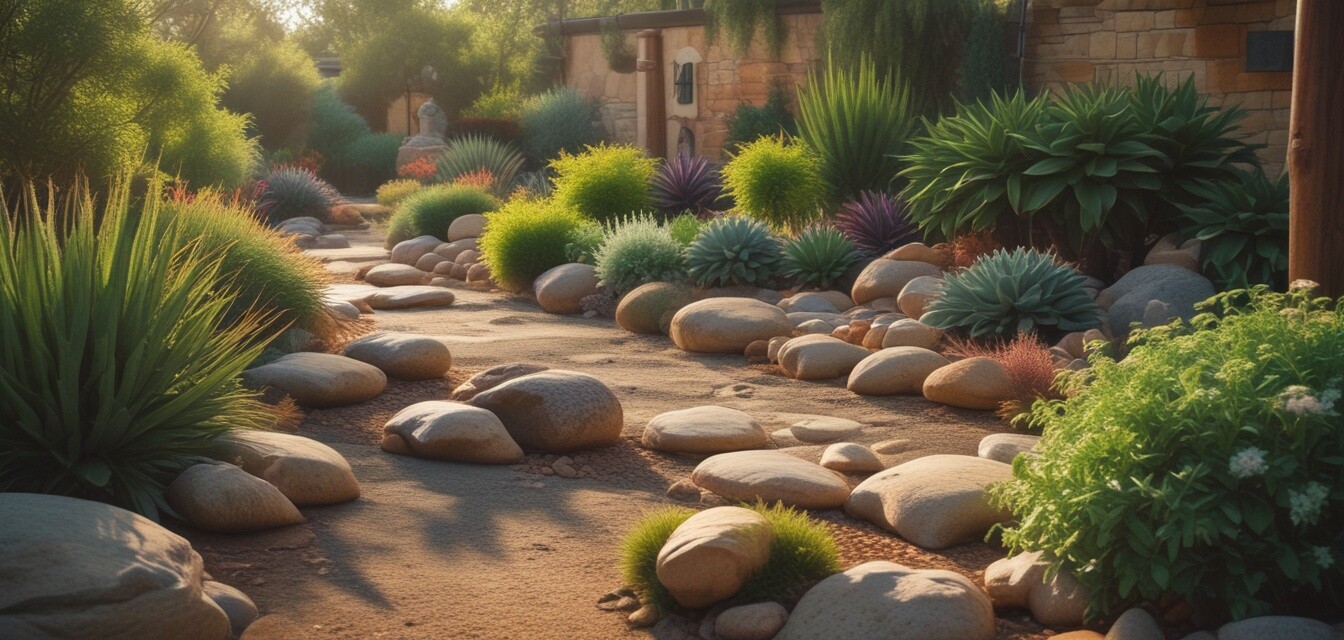
Designing a Water-Smart Garden
Key Takeaways
- Opt for drought-resistant plants to conserve water.
- Implement efficient irrigation systems to minimize waste.
- Use mulch to retain moisture in the soil.
- Design your garden layout to encourage water drainage and retention.
- Incorporate rainwater harvesting methods for irrigation needs.
Creating a garden that is both vibrant and water-efficient is increasingly important in our changing climate. By designing a water-smart garden, you can enjoy a lush outdoor space while using water resources responsibly. This article will provide you with practical tips and insights to develop a thriving garden with minimal water usage.
The Importance of Water Efficiency in Gardening
Water consumption in gardens can often skyrocket, especially during hot summer months. Adopting water-efficient practices not only conserves this vital resource but also fosters a healthy ecosystem. With the right strategies, you can design a garden that retains its beauty without putting undue stress on water supplies.
Benefits of Designing a Water-Smart Garden
- Reduced water bills: Water-efficient gardens use less water, lowering utility costs.
- Environmental impact: Conservation contributes positively to local water ecosystems.
- Variety of plant options: Drought-resistant plants come in various colors and textures.
- Soil health: Water-smart gardening methods can improve soil structure and retention.
Choosing Drought-Resistant Plants
Selecting the right plants is crucial for a water-smart garden. Drought-resistant plants require less water and thrive in arid conditions while still delivering lots of visual appeal.
| Plant Type | Characteristics | Water Needs |
|---|---|---|
| Succulents | Fleshy leaves that store water | Very low |
| Lavender | Aromatic, colorful flowers | Low |
| Yarrow | Hardy perennial with clusters of flowers | Low to moderate |
| Agastache | Attractive blooms that attract pollinators | Low |
Implementing Efficient Irrigation Systems
Water-efficient irrigation systems help deliver moisture directly to the plant roots, reducing evaporation and waste. Here are some methods you can consider:
- Drip Irrigation: Provides water directly to roots slowly and efficiently.
- Soaker Hoses: A porous hose releases water along its length when buried under mulch.
- Sprinkler System: Use smart controls to schedule irrigation based on weather conditions.
Maximizing Soil Moisture
Healthy soil retains moisture better, which is essential in a water-smart garden. Here are some tips for improving soil health:
- Incorporate organic matter such as compost to enhance soil structure.
- Use mulch generously to reduce evaporation and suppress weeds.
- Consider using cover crops in the off-season to protect and enrich the soil.
Creating the Right Garden Layout
The design of your garden layout can significantly affect water usage. Here are some strategies to consider:
- Group plants based on water needs: Place drought-tolerant plants together to allow efficient watering.
- Use contour gardening: Design your garden beds in curves to follow the land’s natural slope to ensure proper drainage.
- Create garden beds with a slight slope: This allows excess water to flow down towards thirsty plants.
Incorporating Rainwater Harvesting
Rainwater harvesting systems catch rainwater from your roof, which you can use for irrigation. Consider these options:
- Rain Barrels: Simple containers installed at downspouts to collect runoff.
- Rain Gardens: Landscape features designed to capture and utilize rainwater.
Innovative Technology in Water-Smart Gardening
Advancements in technology have introduced new tools for efficient gardening. Consider using:
- Soil Moisture Sensors: Devices that monitor soil saturation levels to optimize watering schedules.
- Smart Irrigation Systems: Systems that adjust watering in real-time based on weather forecasts.
Conclusion
Designing a water-smart garden involves careful planning and the selection of appropriate plants, irrigation systems, and garden layouts. By implementing these strategies, you can create a beautiful outdoor oasis that thrives on minimal water, benefiting both your pocket and the planet.
Tips for Beginners
- Start small: Begin with a few water-smart plants to see how they thrive in your local conditions.
- Research native plant species: Native plants are well-adapted to local climates and often require less maintenance.
- Explore online resources for water-saving gardening techniques.
- Consider joining local gardening groups to share experiences and gain new insights.
Pros
- Reduces water usage significantly.
- Enhances garden diversity.
- Promotes soil health.
- Lower maintenance gardening option.
Cons
- May require initial investment for systems.
- Finding the right plants can take research.
For more garden inspiration, check out our articles on unique garden designs, eco-friendly fertilizers, and greenhouses and plant protection.